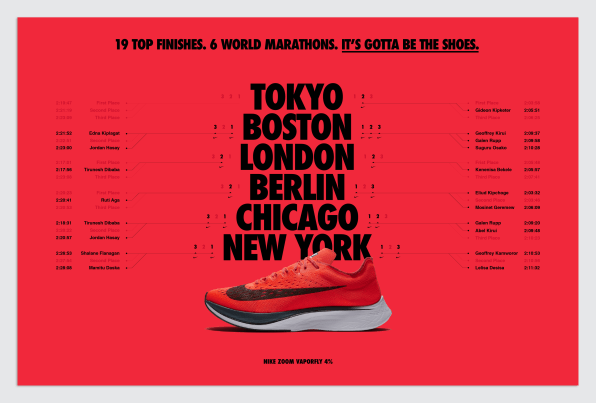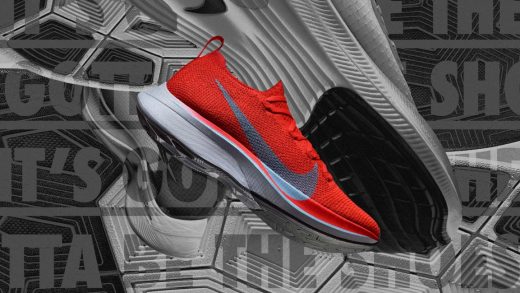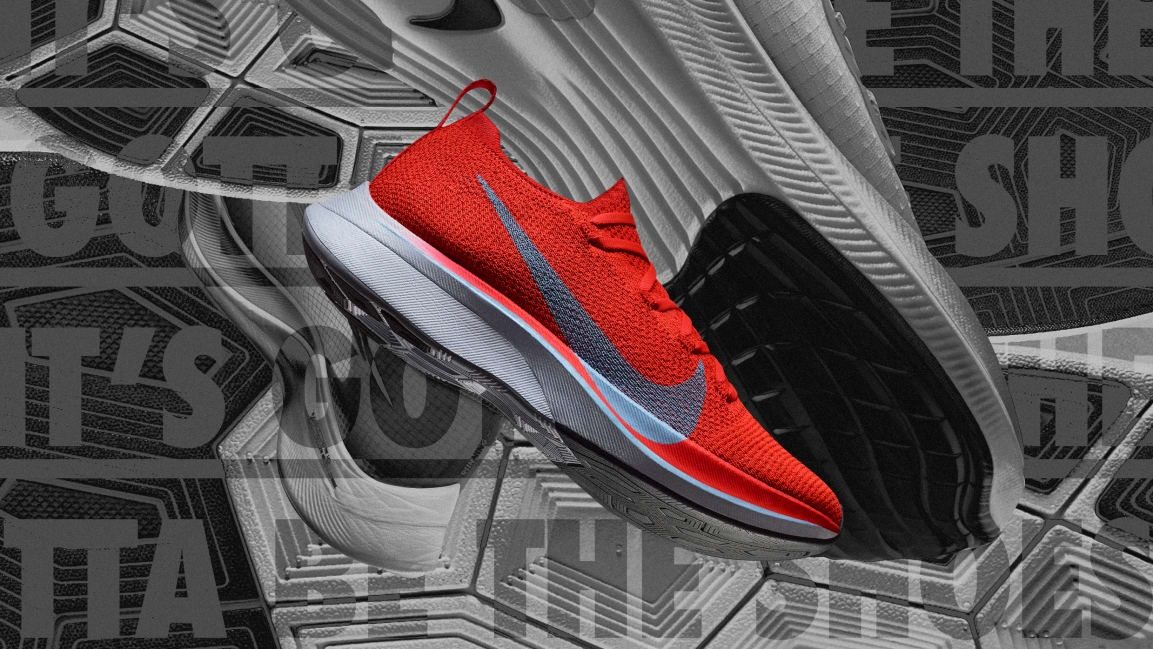Can a shoe make you run too fast? Nike may find out the hard way
For all the technological claims shoe companies have made over the years—Buy these shoes to run faster! Jump higher!—Nike may have actually succeeded too drastically. Elite runners may be banned from wearing Nike’s Vaporfly 4% shoes in races later this year.
The Nike Vaporfly 4% uses a combination of advanced foams and a carbon fiber plate to rebound as much as 4% of the energy from one running stride into the next. According to a test administered by the New York Times, a runner wearing a publicly available version of the Vaporfly 4% ran 4% to 5% faster than a runner wearing a typical running shoe. Kenyan runner Eliud Kipchoge wore the Vaporfly 4% when he broke the two-hour marathon for the first time last October. Then Brigid Kosgei wore the same version to crush the women’s marathon record the very next day.
And now, according to the London Times, the Vaporfly 4% will be banned by World Athletics later this year, the international governing body that determines the gear runners can wear in global competition. A report by the Guardian casts skepticism on this claim, however, citing sources disputing that a full-out ban will happen. Instead, according to the Guardian‘s reporting, certain limits will likely be placed on carbon plate technologies moving forward in an announcement coming at the end of January.

What exactly is going on? We’ve reached out to both Nike and World Athletics to find out. Nike is declining to comment, and we have yet to hear back from World Athletics. However, the International Olympic Committee did confirm with Co.Design that the “rules and regulations” of running are the jurisdiction of World Athletics. In other words, if Vaporfly 4% were to be banned by World Athletics, these shoes could not be worn in future Olympic Games. So this decision is of consequence for track athletes and global sporting fans alike.
As extreme as this all sounds, there is some precedent in banning wearable technology in athletics. In 2008, Speedo debuted a new, full body swimsuit called the LZR (you may remember the company’s more popular misnomer “shark skin”). The swimwear streamlined a swimmer’s body to reduce drag while trapping air inside to add buoyancy. The suits dominated the Beijing Olympic Games, as 98% of all Olympic swimming medals won that year were by athletes wearing the LZR, including those of superstar Michael Phelps. The LZR was better than a new swimsuit. It was a generation-defining record crusher. And then the technology was banned in 2009 from all international swimming competitions. Even Phelps himself agreed the ban was the right decision.
For you or me to wear a Vaporfly or LZR in a race might not matter much. We’re not world-class athletes who are pushing our bodies to their theoretical maximums in competitions where mere hundredths of a second divide the legends from the forgotten. I can’t help but think back to 2013, when I saw then-Nike CEO Mark Parker speak at an event in Beaverton, Oregon. Before introducing the latest in Flyknit technologies—in which a shoe is woven to fit like a sock—he spoke passionately about what brought Nike engineers and designers to work every day: this fundamental premise of “nature amplified”—of taking what biology has given the human body and enhancing it with technology. “We use innovation to serve human potential rather than wonder about human limits,” he said. “Innovation is the antidote for human limits.”
If Eliud Kipchoge wearing Vaporfly or Michael Phelps wearing LZR proves anything, it’s that Parker, who has since been replaced by John Donahoe, was very much correct. And it’s up to the future of sports to decide whether competition is about benchmarking the individual achievements of athletes, or the greater technological achievements of humanity.
(25)



